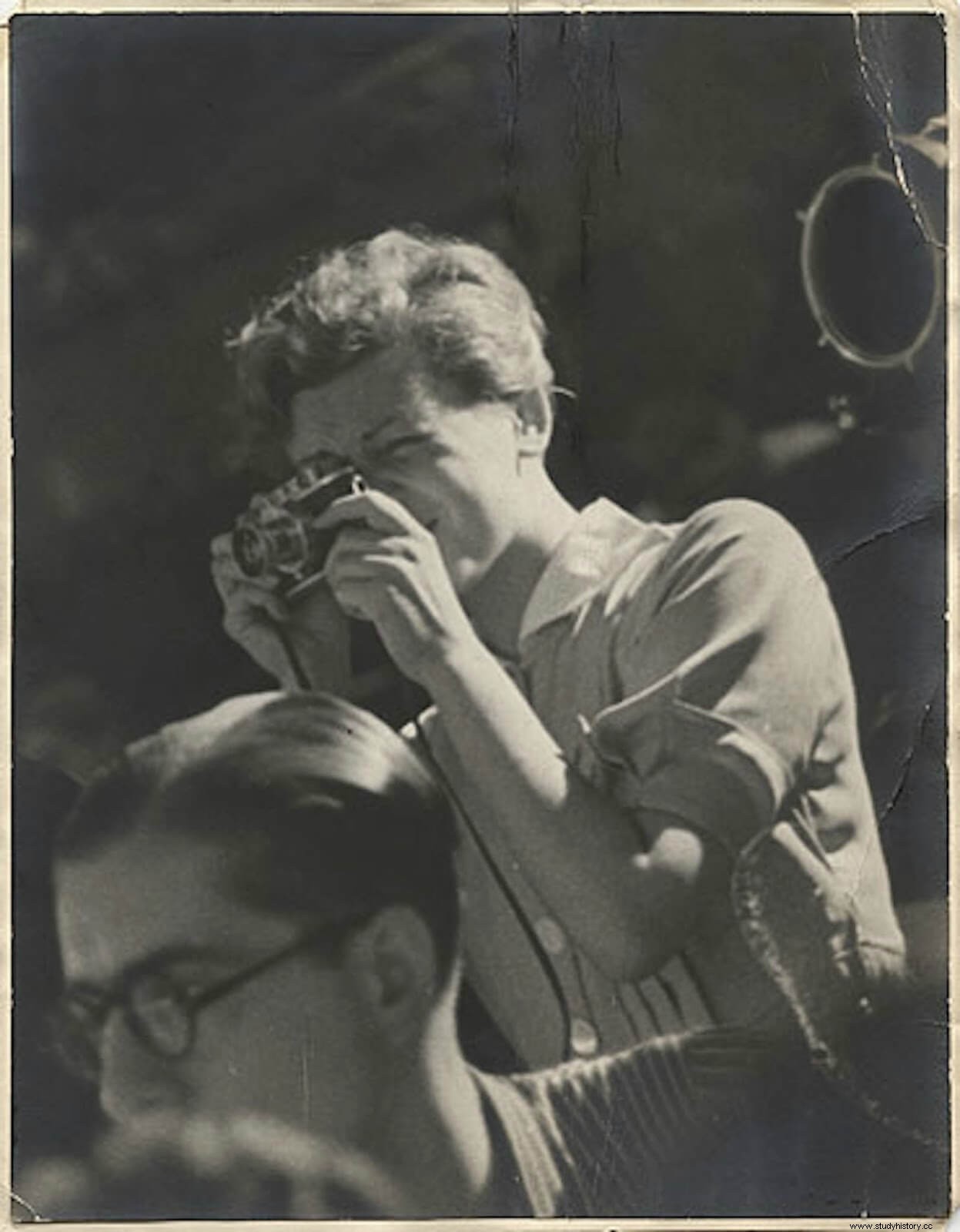
The war is over. Miguel walks through the defeated Madrid and discovers in the streets and squares the scars of a city devastated after two and a half years of blood and fire. He goes in search of a new identity before the imminent entrance of the nationals. He burns compromising documents and papers, but keeps in his wallet the photograph of a foreign woman, blonde, with very short hair, who asked him for a pencil in the hall from the Hotel Florida and whom he then led with other correspondents through the trenches to do her job as a photojournalist. Miguel learns that she died in July 1937 during the Republican withdrawal from the Battle of Brunete.
In one of the stories of Glory Capital (Alfaguara, 2003), "Ruins, the journey:Guerda Taro" (with the Spanishized name), Juan Eduardo Zúñiga contrasts the flight and moral degradation of his fictional character, Miguel, with the construction of the heroic destiny of a real woman who lost his life in full youth. While one is shedding its past in order to survive, the other acquires the symbolic value of the struggle and underpins the ideals that are about to disappear. "What we have experienced will seem like a dream to us, and it will be a time that should not be remembered," writes Zúñiga, whose work lies precisely in rescuing the memory of the defeated.
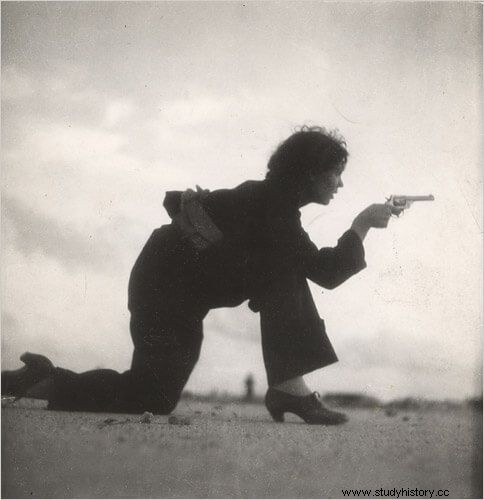
Looks like Gerda Taro fiction before the deep humanity and compassion that the novelist shows towards his imaginary characters, and in fact it has been to a large extent. Her death and her burial in Paris were surrounded by all the militant attention that the case aroused at the time, but she fell into oblivion until her figure grew parallel to the fame of her partner. Robert Capa , considered the father of modern photographic reporting. The convulsive sentimental relationship of the couple and the common use of a shared pseudonym –Photo Capa, Robert Capa– fueled the legend of the subjugated woman who breaks dependency and dies alone in Brunete.
she died young, too young, and her career had no chance to develop:just a handful of photographs, but in which she manages to show the vulnerability of human beings in extreme situations. Zúñiga places her in the Alianza de Escritores Antifascistas –in the Heredia-Spínola mansion on Calle Marqués del Duero– defending the value of the image against the supposed superiority of the written word.
The journalist –real also in this case– José Luis Gallego argued that as a document it was poor for only reproducing an instant of an immense reality that is constantly changing, but Taro replied that “ photography was not a pure mechanical fact:it required a trained conscience to choose what should be captured and that would thus be recorded as the moment equivalent to what the eyes see for an instant, and by what they consider themselves informed”. They could testify to what happened, even if they were isolated scenes. "He also came to say," continues Zúñiga, "that years would pass and everything would be forgotten, what happened would be a confused memory, but one day those photographs would serve to judge the barbarity and cruelty of some bloody years."
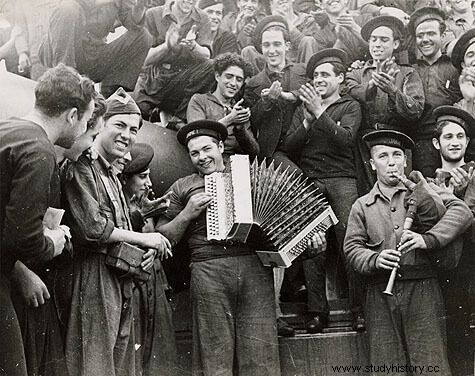
It took Juan Eduardo Zúñiga twenty or twenty years to approach war as a literary matter, he tells us in his Memories of life that Galaxia Gutenberg has just published:"In the chaotic city I imagined stories with their pathetic charge and thus I gave myself to this task of resurrecting stories as well as inventions, obviously dedicated to the besieged capital." It is important not to lose sight of this Guerda Taro interview when she was not yet Gerda Taro. Miguel stares at her intently:"... and he had to admit that the clear blue of her eyes gave her face a serenity that, at the same time, seemed to reserve her feelings, which was confused with haughtiness.”
Gerda Taro in the Civil War
Today we have the necessary studies to be able to assess Gerda Taro's work in all its intensity. At first the images of her are confused with those of her partner, Endre Ernö Friedmann , a Hungarian Jew whom she met in Paris in 1934 and who taught her what she knew of the trade. Taro (Gerta Pohorylle) was born in Germany in 1910, the daughter of a well-established Hungarian Jew in Stuttgart. To sell her work at a better price they devised the pseudonym of Robert Capa , a supposed and renowned American photographer who had arrived in Paris. The trick worked, they started making money, and the couple decided to take advantage of the opportunity on the horizon:the Spanish Civil War.
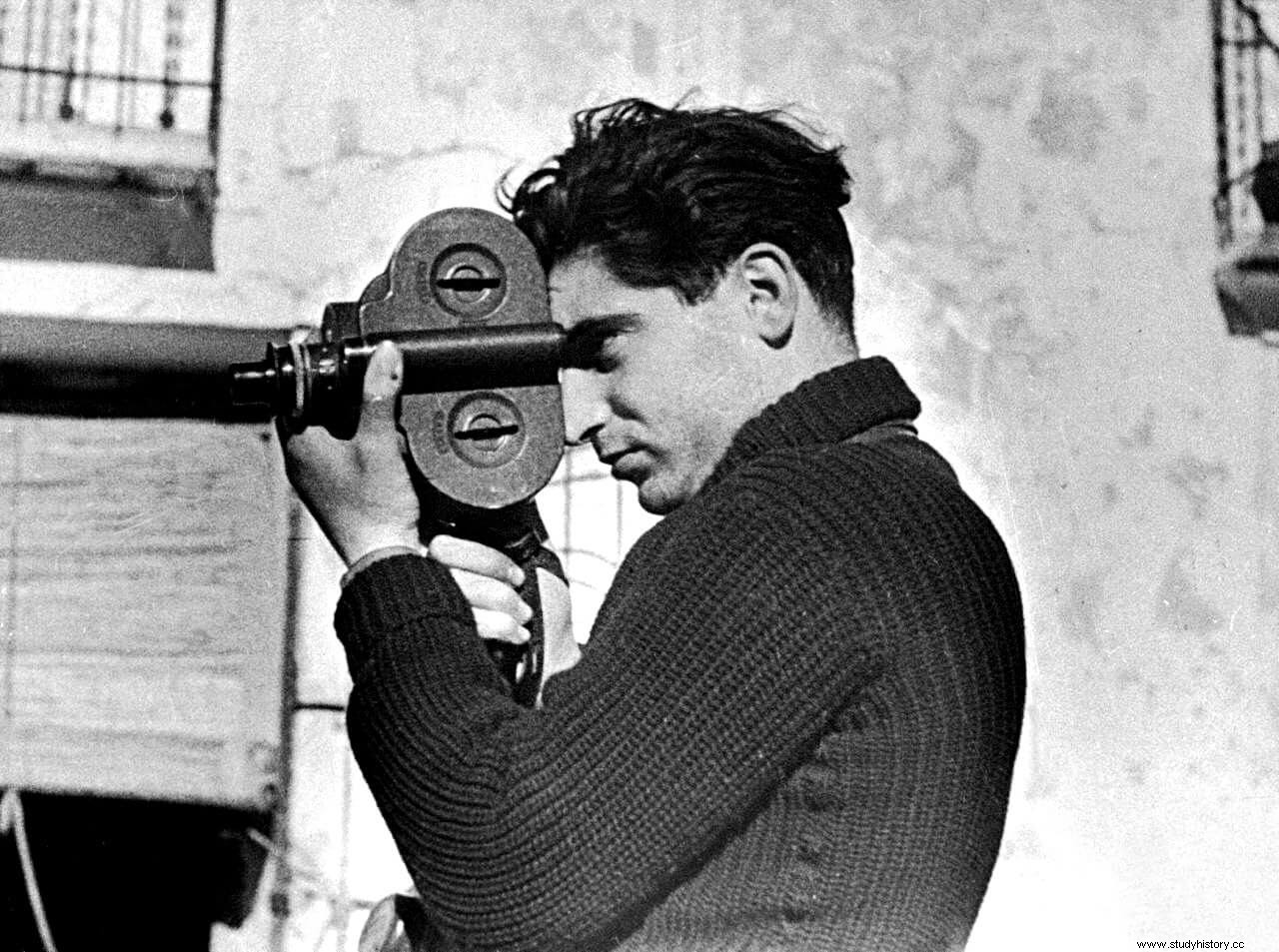
He was the drive, the bohemian, the adventure , intuition, the need to hurry through the night as if it were the last, while she brought political awareness and commitment (for which she had been arrested in Germany and had fled to Paris). They arrived in Spain for the first time in August 1936 and together they photographed the seething streets of Barcelona and moved to the Huesca front to record the struggle of the militiamen. They needed more action and to experience the war more closely. They pass through Madrid and head south without stopping to take pictures. They bring a Rolleiflex camera and a Leica , the camera that due to its characteristics was called to revolutionize photojournalism. Thanks to the much lighter and more manageable Leica, it is possible to get closer to the object and take pictures in any circumstance.
When they return to Paris, the last week of September, their photos are in publications in Europe and America and Death of a militiaman –posted in Vu on September 23 – is hailed as the most impressive war snapshot of all time. Capa returned to Madrid in November, but without Gerda, and his fame continued to grow. Regards He describes him as "one of the most daring and qualified photographers of him" who puts his life in danger to obtain exceptional documents.
At the beginning of 1937, already with Gerda, he arrived again in Spain:Madrid, Almería, Málaga and the Jarama front. His career is a success but, in the words of Richard Whelan, Capa's main biographer ( Robert Capa, Aldeasa, 2003), their sentimental relationship deteriorates. Gerda demanded more professional independence and they began to sign her photos with the label "Capa &Taro" and others with only her last name. "Apparently," writes Whelan, "in the spring of 1937, Capa asked Gerda to marry him, and she refused." They distanced themselves in any way from then on. But the war in Spain brings them together again.
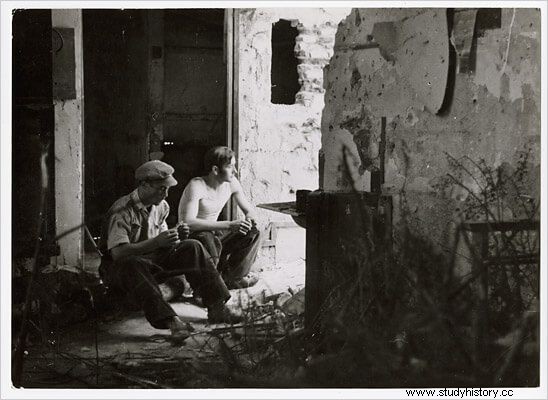
For the last time they met in Valencia – each he had traveled to Spain on his own – on May 26, 1937 and from there they moved to Madrid. They worked together, side by side, exchanging cameras and on many occasions the authorship of one and the other cannot be distinguished. The Mexican Suitcase –which after its incredible adventures was delivered at the end of 2007 to the International Center of Photography (IPC) in New York and contains 4,500 negatives of the civil war by Robert Capa, Gerda Taro and David Seymour, Chim – attributes considered photos of Taro to Capa and vice versa. Capa returns to Paris and Gerda stays in the capital, as a correspondent for a new publication, Ce Soir . She visits the Alliance of Intellectuals, where she meets Miguel.
At the beginning of July she started the offensive against Brunete . The first photographs of her from the conquered town appeared in Ce Soir on the 15th. Gerda returns to battle and insists on General Walter, who orders the withdrawal, and goes into a shelter without stopping shooting the Leica that Capa had given her. She finally gets out of there on the running board of General Walter's car and grabbed by the outside. Suddenly, a republican tank that was advancing at full speed pounces on the vehicle, which swerved to avoid the collision. The tank ran over her . Nothing could be done in the field hospital that the Americans had installed in El Escorial and she died on July 26. Miguel imagines her "dying alone in the coldest and most inhospitable place like the monastery."
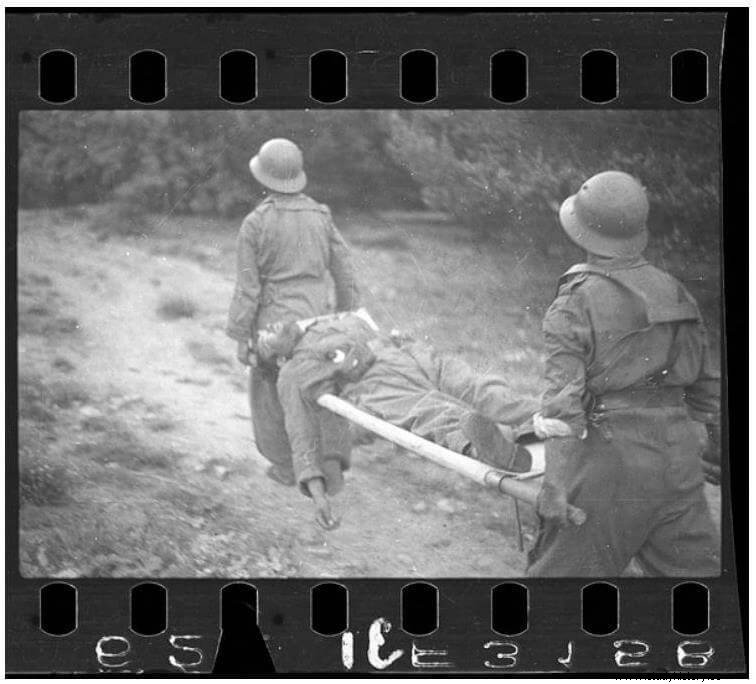
Afterword
In 2009, Jacinto Antón unveiled in El País the name and circumstances of the fatal accident. The tanker's name was Aníbal González and he was driving a Russian T-26 that was driving in reverse. He was not aware that he had run over the reporter until a colleague told him later. At the end of the war he went to France with the last republican tank that crossed the border. He returned some time later, was retaliated against and served a sentence in a prison and in a labor camp. He was a movie projectionist in a town in the province of Albacete where he was born. A reserved and taciturn man, he saw on the screen the reflection of a reality that the great writers and the most intrepid reporters insisted on bequeathing us, against all odds.
